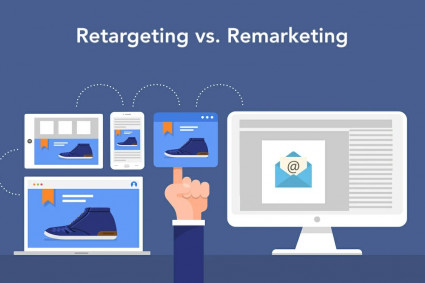
The YouTube algorithm is viewed by many video producers, including companies and professional YouTubers, as a higher power that controls their view counts and is entirely beyond their control.
They contend that the YouTube algorithm is impossible to comprehend. After all, it's one of the platform's best-kept secrets.
Start selling online right away with Shopify by clicking here.
A team of Google engineers outlined their ideas on how videos should be surfaced through YouTube's recommendation system to improve user experience in a research paper that was published back in 2016.
Additionally, one of YouTube's product managers for the recommendation system made a YouTube video explaining that, as of 2015, the sole objective of YouTube's algorithm has been to assist users in finding the kinds of material they like to watch in order to promote long-term pleasure.
The topics of YouTube SEO, social media marketing, and obtaining subscribers are frequently discussed in relation to increasing views on YouTube. The majority of the views you stand to get from YouTube's recommendation system (through the YouTube homepage and "recommended for you" suggestions) are not unlocked by these, even though they do help people find your videos.
The YouTube Algorithm: What is it?
In order to rank and recommend videos based on relevancy and viewer pleasure, the YouTube algorithm is a set of computer instructions created to process videos and related content, such as comments, descriptions, engagements, etc.
How will YouTube's algorithm function in 2022?
The main goal of YouTube algorithm is to make it as simple as possible for consumers to find the most pertinent material. The main objective of YouTube is to boost customer retention and encourage consumers to watch videos for as long as possible.
YouTube's algorithm was initially developed based on the videos that users were clicking through. This, however, resulted in clickbait headlines that occasionally left viewers unsatisfied with the video's real content.
In 2012, it started to shift more in favour of timing. Based on how long viewers watched particular movies or channels, suggested videos were displayed. And it remained that way for around three years before YouTube found a superior alternative.
YouTube has improved for audience pleasure since 2015. Users are actually polled as they view content to learn their true opinions, which helps the system pick the most satisfying stuff.
How does YouTube assess user satisfaction, though?
It sends out millions of surveys each month asking for feedback on a particular video, yet individuals probably only see two to three of them.
It notices when viewers use the "Not interested" option when watching videos.
It examines a video's likes, dislikes, and shares.
Google engineers Paul Covington, Jay Adams, and Emre Sargin analysed additional signals YouTube utilises to rank videos for recommendations in this research study.
Click-through rate (the probability that someone will watch your video and click on it)
The total amount of time people spend watching your videos, or watch time
how many videos from your channel the user has viewed
How recently the viewer last watched a video on the subject
What the user has already looked for
past videos watched by the user
The geographical and demographic data of the user
The only signals you can directly affect are the first three. To further customise the recommendation, the remaining elements depend on variables outside of your channel.
They even claim that their ultimate ranking goal is "typically a simple function of expected watch time per impression." Ranking based on click-through rate frequently promotes misleading videos that users do not finish (a practise known as "clickbait"), whereas watch time more accurately reflects involvement.
Some people could perceive this to suggest that YouTube would penalise you if you optimise for click-throughs, but that is a major misconception.
Only bait-and-switch strategies—overpromising before the click and offering subpar content after it—are being penalised by YouTube. The click-through rate is still crucial today. After all, you can't generate a lot of YouTube watch time without first receiving clicks.
Even in YouTube Studio, you can see these priorities mirrored by looking at your YouTube statistics dashboard.
You may see the following stats under the Reach Viewers page, which collectively demonstrate YouTube's new focus on click-through rate and watch time:
Impressions: The number of times visitors see the thumbnails for your videos as suggested videos, on the homepage, or in search results.
Where on YouTube your video thumbnails were displayed to potential viewers is the source of traffic for impressions.
Click-through rate (CTR) for impressions: How frequently (based on logged-in impressions) visitors viewed a video after seeing one of your thumbnails.
Views following impressions: The frequency with which visitors watched your films following a YouTube discovery.
Watch time from impressions: Watch time that was generated by YouTube users who viewed and clicked on your videos.
How the algorithm is set up on YouTube
Users of YouTube will primarily see recommended videos on the homepage and when watching other videos. The algorithm used by YouTube to generate these recommendations operates differently for each of these places.
Let's discuss the reasons why specific videos appear on each of these two sites.
Homepage
You arrive at the homepage the moment you access the YouTube website or launch the mobile app. Here, YouTube seeks to draw users in and try to keep them on the app for as long as possible by offering the most pertinent and personalised video choices for each user.
Two criteria are used to evaluate homepage videos:
Performance of the video: How much similar viewers appeared to appreciate the video.
Personalization: Your particular watching preferences and viewing history
YouTube does not currently have knowledge about a viewer's motivation for visiting the video platform. As a result, it must rely on what it already knows, which is based on the kinds of videos a viewer has previously appreciated.
Recommended video
The recommended videos section can be found on the right sidebar, below the video you're now watching (or above it if you're using the mobile app).
These videos are suggested based on what the algorithm believes you are most likely to watch next and are based on your viewing history for this session. Among the criteria are:
videos that are frequently seen in groups
Videos on related subjects
Videos you've previously viewed
These films typically cater more to your current session than a broad selection of what YouTube believes you would enjoy because it now knows why you're accessing its site at this time.
7 techniques to expand your YouTube audience
1. For your YouTube channel, stick to a constant idea or format.
The majority of excellent YouTube series or channels can be summed up in five seconds:
A celebrity feast called First We Feast
Will it combine? by Blendtec lets you combine objects that aren't designed to be blended
Vox: important issues presented in a clear and interesting manner
On the other hand, a lot of YouTube channels and content producers find it difficult to grow their followings because they utilise their channel more as a repository for all of their video content than as a place to host a regular video series.
Success on YouTube is built on consistency; without it, you may be able to attract attention, but you won't be able to hold it.
Because consistency makes it simpler for users to chose to watch more of their material and subscribe to their channel, YouTube creators that find their consistency are able to stably expand their subscriber and viewership.
Celebrities enjoying food is a common theme on The First We Feast channel, which features a number of episodes that are essentially variants on the same theme.
Below, you can see how this reliability fuels its gradual subscription development. The stickiness of the premise and the consistency they can find throughout the rest of the channel's programming really provide viral videos a better chance of turning each passing viewer into a long-term member.
To avoid undercutting your own efforts, it's advisable to do any deviations from your main point on an other YouTube account. For instance, Complex, a website with a totally different readership and purpose, owns First We Feast. The Featured Channels tab links the channels together, but other than that, they don't really cross paths.
You may find free video editing software that allows you to submit videos to your channel with only one click to make posting more convenient. You may publish movies fast and reliably without wasting time downloading and uploading files.
2. Add more sources to the recommendation engine.
The recommendation system cannot be relied upon to drive all of the views for newer YouTube channels.
After all, recommendations are mostly dependent on how previous viewers have watched and engaged with your content. Without people seeing your videos, YouTube would have no data on which to base its suggestions. Use all the customary methods to advertise your videos, including:
sending your email list fresh videos
collaborating with media outlets or other influencers
promoting your video content on social networks
starting an affiliate marketing campaign on YouTube
But above all, pay attention to YouTube SEO and growing your subscriber base because these are the main factors that the YouTube algorithm considers when providing personalised suggestions. This will help you increase video views over time.
According to the engineers' findings in their study, "the most essential signals are those that indicate a user's previous interaction with the item itself and other related products. Take the user's prior interactions with the channel that posted the video being assessed, for instance. How many videos has the user seen from this channel? When did the user last watch a video on this subject?
You may enhance the likelihood that your videos will be suggested to new users the next time they open YouTube by encouraging them to watch more once they click through to one of your films.
3. Produce clickable thumbnails
We've demonstrated that click-through rate is still crucial and that YouTube giving watch time priority is really a defence mechanism against clickbait of poor quality.
Let's now discuss how to increase your click-through rate using two excellent resources for creating clickable thumbnails: Netflix and YouTube's trending videos page.
Have action images or close-ups of expressive faces.
There are many animated, extremely emotive faces on video thumbnails on YouTube.
An analysis of how artwork performed on the platform by Netflix found that "emotions are an efficient technique of conveying nuanced nuances. Humans are programmed to respond to faces; this has been observed to be true across all media. But it's crucial to remember that faces with nuanced emotions perform better than neutral or stoic ones.
One of the first patterns observed by Netflix is worth implementing in your own thumbnails: an image's propensity to outperform others decreased when it had more than three people.
Include one to three faces wearing expressions that speak volumes in your thumbnails to improve click-through rates.
If your movies don't feature expressive faces, you can still generate an emotional response by using action-packed thumbnails, like the Slow Mo Guys do.
When composing your thumbnail image, adhere to the "rule of thirds"
The "golden ratio," which reduces the time it takes for our brains to process an image, may be achieved more simply thanks to the rule of thirds.
According to this rule of image composition, you should place your point of interest at the first or last third of the frame rather than the middle.
Designing your thumbnail in this way enables you to attract the viewer's attention to the most significant "message" in your image, however it's more of a suggestion than a firm rule.
Give your thumbnails text.
According to a 2019 Sandvine analysis, YouTube now makes up 37% of all mobile internet traffic. Additionally, it implies that a sizable portion of your visitors will access your movies via a mobile device.
For them, the YouTube main page appears as follows:
The user's eyes will almost certainly be pulled to your video's thumbnail first due to its prominence in relation to the title. They are more likely to read the headline and click to your video if they find the visual intriguing enough.
Therefore, why not include some language in the thumbnail to aid readers in making a decision?
The text can be your video's title or perhaps just a few lines connected to its hook. Make sure your own thumbnails can convey what your video is about, even without the title, if more than a third of your visitors are accustomed to "reading" thumbnails on mobile.
Personalise your thumbnails
You'll see that a lot of the trending videos on YouTube have optimised their "first impression" by utilising the strategies we've discussed above if you glance at the trending tab.
Making it simple for viewers to identify your films at a glance enhances the likelihood that they will be clicked on by individuals who are already familiar with your content on YouTube, where thumbnails might look quite similar.
Consider branding your thumbnails if the layout of your YouTube channel is standardised to set them apart from other suggested content.
4. Motivate visitors to stick around when they click
It's one thing to get viewers for your videos. Another is to get them to watch a video all the way through.
Fortunately, by including this goal in your video creation process, you can raise your video completion rate (and gain more views).
Start off strong and include a "hook" in your video's introduction.
Transcribing your videos will allow viewers to watch them quietly.
The length of your videos should be adjusted in accordance with your analytics (how long do users watch before stopping?).
Avoid using the same shot for too long or you risk boring the audience (jump cuts are common on YouTube for this reason).
If your video is lengthy, intersperse it with brief breaks that bring the viewer's attention back when it begins to stray.
Request that your viewers turn on notifications for your upcoming videos, click the Subscribe button, or watch the other videos at each video's end screen.
5. Promote marathon viewing on your channel
The channel level can also be optimised for watch time by using methods that involve watching videos consistently.
In addition to having a clear focus for your YouTube channel, which is undoubtedly the most crucial element, here are some more ways you may encourage viewers to watch more of your content:
Making manual recommendations for related videos using cards and end cards
linking to playlists of videos anytime you share, ensuring that your own video is always the next one the user sees
establishing a consistent format for your videos, from the thumbnail to the actual video, so that viewers may reasonably anticipate they'll appreciate your other videos.
Including a particular call to action or even clips from other films to directly "pitch" viewers to watch more content
Cards can be used to guide viewers deeper into your YouTube channel's rabbit hole. Another smart move is to enable subtitles for all of your videos so that viewers may keep watching even without sound.
6. Make your movie keyword-optimized.
Because YouTube is a search engine as well, optimising your videos for a focus keyword and a few supplementary keywords can make them more visible in YouTube search results and offer the algorithm a clearer understanding of what your material is about, allowing it to promote it at the appropriate times.
The first thing you should do is conduct keyword research on the platform to determine which keywords and video themes are trending and might appeal to your target audience. You can find the ideal keywords to use by using a Chrome plugin like TubeBuddy.
Simply enter your target keyword in the search bar, then look at TubeBuddy's statistics on the sidebar. Until you locate the perfect keyword, try a couple other similar ones.
Look for a keyword that has a "Very Good" or "Excellent" overall score. However, if your YouTube videos consistently receive high rankings, you can usually ignore the "Competition" option because your channel has already proven to be a strong rival.
Then you'll want to make sure the title, description, and tags of the video all contain the keyword. You can also include a few hashtags that assist organise your video information at the bottom of your video description.
7. Pay attention to your rivals on YouTube
Are there any of your rivals on YouTube? If so, pay attention to the kinds of stuff they're putting out. After all, you want your video to be recommended instead of one of theirs, not the other way around.
Pay attention to details such as:
most popular of their videos
whatever episodes or playlists they produce
How involved is their audience
How they make their metadata, titles, and descriptions for videos
Making sure you cover all of the same themes as your competitors will help your audience place more trust in your YouTube channel by helping you to better focus your own strategy.
One thing endures despite changes to the YouTube algorithm.
Over the years, YouTube's algorithm has undergone numerous changes, leaving businesses and creators perplexed as to why their old strategies no longer work.
But even when the YouTube algorithm changes, remember that the platform's aim is still to increase the number of viewers and interactions with YouTube videos. And their objectives are not all that dissimilar from yours.






